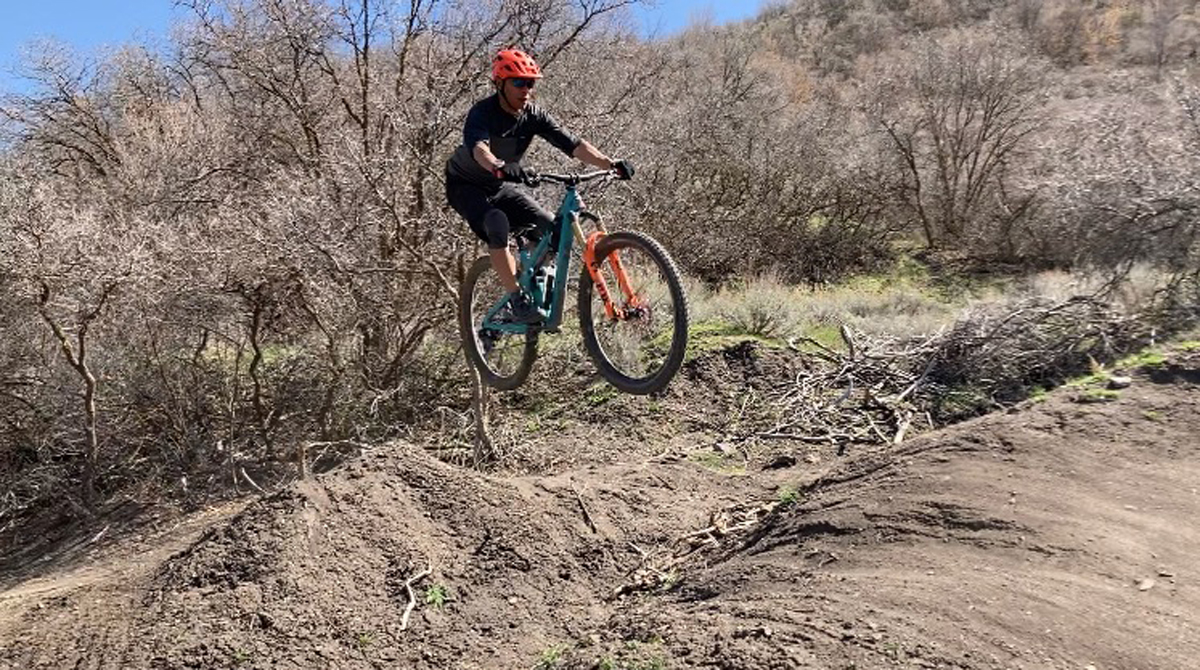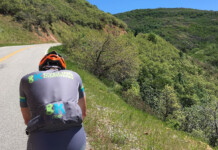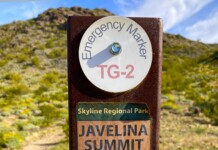By Tom Jow — “I’m too old to jump” is a phrase I often hear these days. This is because many of the friends I ride with are, like me, getting older. It is a scientific fact that as we age, we become a little more fearful, a little less willing to take risks. This psychological effect of aging was becoming clear in my own riding. Several years ago, I noticed I was riding around more jumps and walking more technical features than I wanted to. Some features I had ridden before. Some, I knew in the back of my mind that I could, but was afraid to. I decided it was time to bring my riding level back up. In the process, I learned how to push back against fear.
What causes fear? In the case of jumping on bikes, it is the physical injury caused by crashing. Deep down, however, our fear is the unknown outcome of the event. Will I nail it, or will I crash? How are we going to skew the odds of landing upright in our favor? The best way to do that is with knowledge and practice.

One way to learn riding and jumping techniques is to attend in person classes. In person clinics and classes provide a controlled environment, instruction, and practice under expert supervision. Being a do-it-yourselfer and a cheapskate, I chose online instruction. In other words, I watched a lot of videos. I watched videos of, and about jumping. Some were good. Some were less than good. They were all entertaining. However, I had to build my own practice.
The first goal of practice is to to turn essential, fundamental movements into autonomous actions. In order to do this, we need our safety gear and a safe controlled environment with features of a level we can complete confidently. Practice riding these features with good technique until we can nail it about every time. If we get tired, can’t concentrate, and start failing good technique then stop. Remember the saying “practice how you play”? We do not want to practice bad habits.
Our end goal for practice is progression. This is the scary part. Moving up to the next level requires riding the unknown. Remember all that practice to create autonomous action? We just have to apply that skill to a jump that may be a little higher, or a little farther. To reduce the anxiety of attempting new, larger features I set ground rules for myself. For example, I would not attempt big scary things when riding alone. In addition, the weather and trail conditions had to be favorable. Finally, I had to listen to my body. Did I feel like I was riding well that day? Do I feel good about going for this today? My internal feelings had the most effect over when I would progress. Until recently, the average number of times I looked at a jump before attempting it was ten. This could have been discouraging, but I was determined; I knew I would get there.
What often tipped the scale though was my riding partners. One rides at about my level. When we did our line inspection, he would often pick out the worst part of the line or landing. In order to get past that, we occasionally had to challenge each other. “I’ll do it if you do it”. My other partner rides above my level. He usually pointed out the best part of the line. He would say, “take off here, land there, easy peasy”. The best reasons for having friends along are, a) to watch someone hit it first, and b) having someone to follow so we can get the speed correct.
Mountain biking is a challenging sport on many levels. Riders of all ages and levels will have to meet and rise above the challenges if they wish to continue enjoying the sport. Due to the natural loss of strength and risk taking by older riders, it is even more important for us to be diligent about improving our skills. Through the use of learning, practice, progression, and friends we can all learn to jump and ride other features successfully. Clearing that first gap jump, no matter what size is a huge rush and sense of accomplishment. Then it’s all high fives from there.
Got a bike question? Email Tom at runnerrunner.rider@gmail.com








